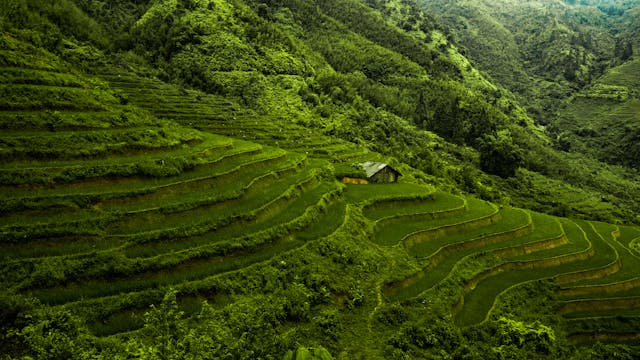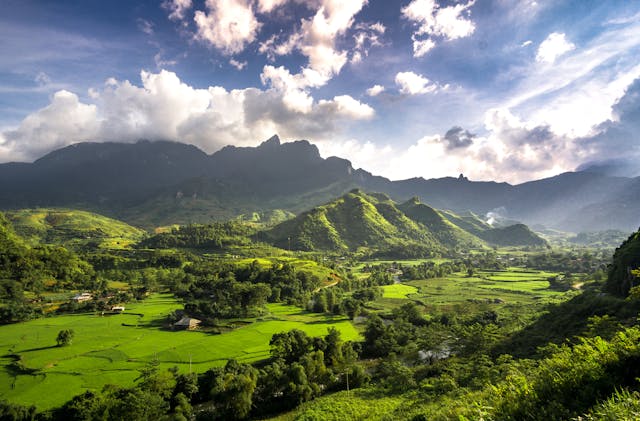Explore Untouched Beauty and Authentic Culture Off the Beaten Path
Northern Vietnam is famed for its dramatic landscapes, ethnic diversity, and vibrant traditions. While places like Sapa, Ha Giang, and Bac Ha attract increasing numbers of visitors, there are still many untouched, lesser-known villages in the region that remain undiscovered by mainstream tourism. These hidden gems offer raw, authentic travel experiences—ideal for adventure seekers, cultural explorers, and anyone wanting to escape the crowds.
In this article, we’ll uncover some of the best hidden villages in Northern Vietnam you’ve probably never heard of. These villages promise unique cultural encounters, breathtaking scenery, and a glimpse into a slower, more traditional way of life.
1. Nam Dam Village – Ha Giang Province
Located near the famous Dong Van Karst Plateau, Nam Dam is a small village inhabited by the Dao ethnic group. Unlike nearby Meo Vac or Dong Van, Nam Dam remains peaceful and under the radar. Traditional clay houses dot the hillsides, and villagers still wear traditional clothing and practice ancient customs.
-
Why visit?
Experience Dao culture, participate in herbal baths, and hike through the karst mountains surrounding the village. Nam Dam is also a perfect base for exploring the nearby Ma Pi Leng Pass. -
How to get there:
From Ha Giang City, take a motorbike or car about 45 minutes north toward Quan Ba district.
2. Thon Tha Village – Ha Giang Province
Another hidden gem in Ha Giang, Thon Tha is a Tay ethnic minority village nestled in a green valley surrounded by rice fields and forested hills. It’s an ideal destination for eco-tourism and cultural immersion.
-
Why visit?
Stay with Tay families in traditional stilt houses, enjoy home-cooked meals, and explore the nearby waterfalls and hiking trails. The village is committed to sustainable tourism. -
How to get there:
Only about 5 km from Ha Giang City, making it a convenient yet off-the-path option.
3. Ban Ho Village – Lao Cai Province (near Sapa)
While Sapa gets crowded during peak season, Ban Ho offers an alternative just 25 km away. Home to the Tay and Red Dao people, Ban Ho is known for its thermal springs and serene valley views.
-
Why visit?
Trek through rice terraces without the crowds, swim in hot springs, and stay overnight with local families. The quiet pace and welcoming locals make it a favorite among slow travelers. -
How to get there:
From Sapa, take a motorbike or arrange a jeep transfer. The ride itself offers amazing views.
4. Ban Cuon Village – Lai Chau Province
Ban Cuon, near the town of Tam Duong in Lai Chau, is surrounded by limestone peaks and rice paddies. Home to the Lu ethnic group, this village has preserved its ancient textile-making traditions.
-
Why visit?
See the rare black teeth of older Lu women, a traditional beauty practice, and witness the vibrant weaving techniques passed down through generations. The scenery here is nothing short of spectacular. -
How to get there:
Take a bus or private car from Lai Chau City, about 40 km away.

5. Na Hang Village – Tuyen Quang Province
Tucked beside the Na Hang Nature Reserve, this small village sits beside one of Northern Vietnam’s most scenic lakes. It’s a tranquil escape for nature lovers and photographers.
-
Why visit?
Take a boat tour on the emerald-green Na Hang Lake, visit waterfalls, and explore limestone caves. The Dao and Tay communities here are open to cultural exchanges and homestays. -
How to get there:
Travel by road from Tuyen Quang City—approximately a 3-hour drive.
6. Pac Ngoi Village – Bac Kan Province (Ba Be Lake)
Pac Ngoi is located near the stunning Ba Be Lake, yet it remains quiet and relaxed compared to the main tourist areas. It’s home to the Tay people who have lived in harmony with the lake and forests for generations.
-
Why visit?
Enjoy kayaking on Ba Be Lake, hike in Ba Be National Park, and take part in cultural performances. The surrounding limestone mountains create a stunning backdrop for photography. -
How to get there:
About 6 hours by car from Hanoi to Ba Be National Park, then a short drive to the village.
7. Sin Suoi Ho Village – Lai Chau Province
This H’mong village, perched on a mountainside near the border with China, is still largely untouched by tourism. Sin Suoi Ho is known for its flower gardens, waterfalls, and spiritual atmosphere.
-
Why visit?
Discover the peaceful life of the H’mong people, see traditional wooden houses, and hike to local waterfalls and viewpoints. -
How to get there:
Located 30 km from Lai Chau City, accessible by motorbike or private car.
Tips for Visiting Hidden Villages in Northern Vietnam
-
Respect local customs: Many of these villages are home to ethnic minorities with unique customs. Always ask before taking photos, and dress modestly.
-
Bring cash: ATMs are rare in remote areas.
-
Use a local guide: For a more immersive experience, hire a guide from the area. They’ll offer insights and help you connect with local families.
-
Travel responsibly: Avoid leaving trash, respect wildlife, and support homestays and local businesses.
Conclusion
Northern Vietnam is filled with hidden treasures waiting to be discovered. While popular destinations like Sapa and Ha Giang offer breathtaking views and cultural diversity, these lesser-known villages provide a more authentic, quiet, and enriching travel experience. If you’re seeking a deeper connection with local life, traditions, and nature, these hidden villages in Northern Vietnam are calling your name.
Featured Image: Hà Giang in Northern Vietnam | Photo by Q. Hưng Phạm

